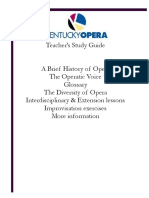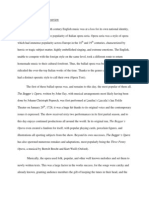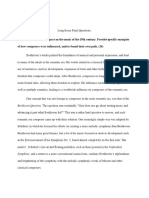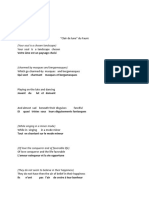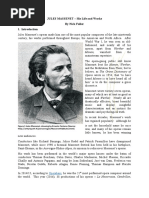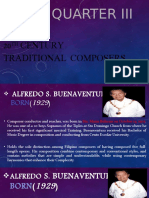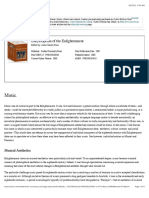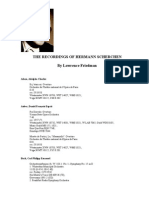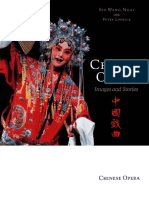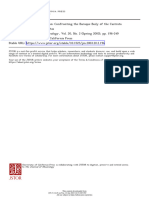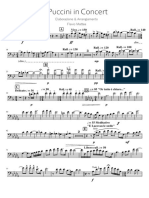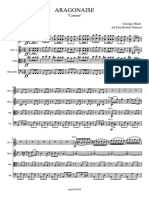0% found this document useful (0 votes)
114 views9 pagesL'Egisto in The Fall of 2019, There Were Two Recordings Available of The Work. One of These
This document discusses DePaul Opera Theater's 2019 production of Francesco Cavalli's opera L'Egisto. It provides historical context about 17th century Venice and the origins of opera. It then discusses the production choices made by conductor Jason Moy and director Elizabeth Margolius to stage the opera authentically based on its original Baroque conventions, rather than modernizing it, in order to preserve Cavalli's intentions. Their goal was to attract a modern audience by presenting the piece as uniquely antiquated rather than forced into a modern framework.
Uploaded by
Rachel SinghCopyright
© © All Rights Reserved
We take content rights seriously. If you suspect this is your content, claim it here.
Available Formats
Download as DOCX, PDF, TXT or read online on Scribd
0% found this document useful (0 votes)
114 views9 pagesL'Egisto in The Fall of 2019, There Were Two Recordings Available of The Work. One of These
This document discusses DePaul Opera Theater's 2019 production of Francesco Cavalli's opera L'Egisto. It provides historical context about 17th century Venice and the origins of opera. It then discusses the production choices made by conductor Jason Moy and director Elizabeth Margolius to stage the opera authentically based on its original Baroque conventions, rather than modernizing it, in order to preserve Cavalli's intentions. Their goal was to attract a modern audience by presenting the piece as uniquely antiquated rather than forced into a modern framework.
Uploaded by
Rachel SinghCopyright
© © All Rights Reserved
We take content rights seriously. If you suspect this is your content, claim it here.
Available Formats
Download as DOCX, PDF, TXT or read online on Scribd
/ 9









